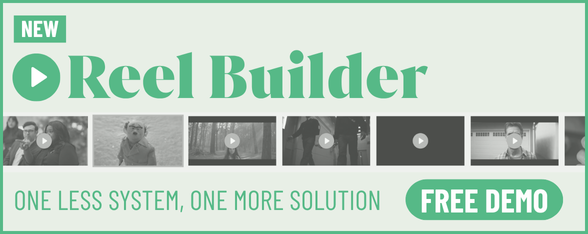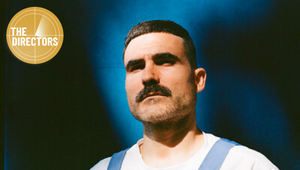
For Ibran Trassierra the Bigger the Ambition, the Clearer the Focus Needs to Be

As chief operations officer, Ibran Trassierra is responsible for overall agency relationships and ensuring creative and strategic output meets the standards established by BOL Production House's history and reputation.
He determines the scope of work for the Barcelona production company, allocates resources, and ensures top-level milestones and creative expectations are met.
A few years ago, we threw ourselves into a personal project. No clear roadmap. Just a strong creative instinct and the urge to make something that felt meaningful. At first, that felt like enough. But as the project evolved, so did the lesson. The bigger the ambition, the clearer the focus needs to be.
We learned to define what we’re trying to say from the start. What we want to move in others. What success looks like, both emotionally and strategically. That clarity now shapes how we approach every brief, whether it's our own or someone else's.
We also learned that not every idea needs to reach the finish line. Some are meant to stretch you, test you, even stall you. The challenge is knowing when to hold on and when to move on. Letting go isn't giving up. It's making space for the next idea to come through stronger.
This experience changed the way we work. We still chase ideas with heart. But now we do it with sharper focus, deeper honesty and a clearer sense of creative direction. And that makes the work better. For us and for the people we build it with.
It started around 2020, just before the pandemic. One of our team members at the time brought in a small idea. A spark. At the time we were all focused on craft and creativity, and the thought of turning it into something bigger felt exciting. Back then, getting a Vimeo Staff Pick felt like a real milestone. We saw it as something that could bring recognition and more projects.
But the truth is, the project kept growing without much of a plan, and it started snowballing. Over time, we realised we had jumped in for aesthetic reasons, without asking ourselves what we were trying to say. And once you're in deep, it's harder to go back and build that clarity from scratch.
In hindsight, this was a turning point. We’ve always cared about the creative, but this experience shifted us. It made us more conscious of structure, message and purpose. It’s part of how we’ve grown, not just as creatives, but as a studio.
About two or three years into the project we hit a wall and we sat down to discuss the direction. There had been so much effort, so much energy, but it wasn’t adding up. The story wasn’t clear. The purpose felt blurry.
We had built scenes, moments, even a full animation without ever really stopping to define the core idea. What were we trying to say? What was the message? Who were these characters beyond the visual beauty? Looking back, that was the root of it. We had skipped over the hard questions at the beginning.
Some of us were ready to stop. Others said, let’s push forward. At the time, I felt pushing forward was the right thing to do. But if we were starting again today, I think I’d make a different call.
The project had already grown bigger than the story it was built on. There were beautiful things we didn’t want to lose, but they were sitting on shaky foundations. That moment taught us something that has stuck ever since: story and purpose come first. Before design. Before execution. Before anything else.
It’s a hard lesson when so many people have poured so much into something. But we carry that learning now into every new piece. Spend the time up front. Define the intent. And be honest early, so you don’t have to unravel it later.
I owe a lot of this learning to a few people on our team who had the courage to slow things down.
Pol Solá (founder and ex-creative director of the company) was the first to call out that the project was growing in ways we couldn’t really manage. That kind of clarity in the middle of the storm is rare. And later, Marcello Buselli (founder and CEO) helped us pause and reflect, not just on what we were making but on why. He asked the bigger questions we had been avoiding.
Those conversations weren’t always easy, but they came from a place of care, friendship and respect.
We’re lucky to work with people who know when to push and when to pull back. People who aren’t afraid to challenge momentum if it means protecting the integrity of the work. That’s what shaped the insight. And that’s what makes a team feel like a team.
It struck a chord because it was one of the most intense projects we’ve ever taken on. In time, in energy, and in cost. It ended up being the most expensive production we’ve done as a studio. And yet, it started without a solid plan. That gap taught us everything.
When ambition is high, clarity has to be even higher. What are we trying to achieve? What’s the message? What’s the format that serves it best? Those questions need answers from the very beginning, not halfway through. Because if we don’t stop to define them early, we risk building something beautiful that ultimately misses the point.
There were times we told ourselves, “Just one more sprint and we’ll get there.” But it takes maturity to pause, to question the goal, and to ask whether the outcome still aligns with the effort. Especially when expectations are rising, tension builds, and the pressure to keep going is real.
There was also the reality of working in parallel with other teams on more routine flows. That contrast, between a passion project demanding everything from us and other processes moving at a steadier rhythm, added friction. Everything got tangled. Pressure built. And we didn’t always handle it perfectly.
Looking back, we see where we could have done things differently. That kind of reflection isn’t always comfortable, but it’s how we grow. Now we bring more discipline into the early phases. We spend time on the message. We define the intent and strategy. And we make sure the format fits the ambition.
That’s the learning that stays with us. And it shapes how we approach every new idea from day one.
This changed the way I think. Back then, we were more likely to dive headfirst into an idea just because it felt creatively exciting. I’d open a few Illustrator files and start exploring. That momentum felt good. But there’s a risk in getting swept up in the energy without asking the harder questions. Where will this live? What’s it for? What are we trying to move in people?
Now we plan differently. Especially with bigger projects. We’ve seen what it looks like when a team works for years without a clear target, and how hard it is to course-correct once you’re deep inside the process. That insight didn’t come from a textbook. It came from the people around us. Teammates who weren’t afraid to ask hard questions.
It also shifted something deeper. Knowing when to keep going and when to let go. That’s a hard call to make when you care deeply about the work. But sometimes moving on is the wiser choice.
This experience also marked a shift in how I see my role. As I moved from a purely creative position into a more strategic one, stepping into the role of EP, I started to feel the weight of questions I used to overlook. Creative energy is powerful, but without clarity, it burns fast and can lead you down paths that aren’t right for the company, or simply not right for the moment.
Over time, I’ve realised this wasn’t just a lesson for that one project. It’s become something I carry into every new idea or project. It’s not about improvising or trusting that things will fall into place later. That mindset might get you started, but it rarely gets you where you want to go.
We’ve also seen the difference it makes when those elements are clear from day one. On later projects, even ones developed in parallel, we worked with sharper intent. There was alignment between the concept, the structure, and the production. And even if the scale was smaller, the results were stronger because the purpose was clear from the beginning.
It’s something we talk about often now, especially when we’re starting something new. As I said, we’ve learned that the bigger the ambition, the more clarity you need up front. Not just around the message, but around the format, the scope, the time it takes, and what success actually looks like.
When someone brings in a new idea, we don’t want to kill the excitement. That initial energy matters. But we’ve also learned how quickly you can fall in love with the aesthetics of a single scene, and forget to ask the bigger questions. What are we really trying to say? And is this the best way to say it?
That’s usually where we pause. We ask: what would this take, really? Where does it live? How does it grow? And why now? At first, those questions can feel like a blocker. Like we’re slowing something down that should just flow. But once people feel where the questions are coming from: respect, experience and care, they usually respond with openness.
Especially with passion projects, there’s a tendency to see them as a break from commercial thinking. But we believe they still deserve attention.
So now we start by asking, honestly: what do you want to do, and what does it take to do it well?
That’s the kind of creative culture we believe in. And it’s what we keep showing up for, project after project, idea after idea.















